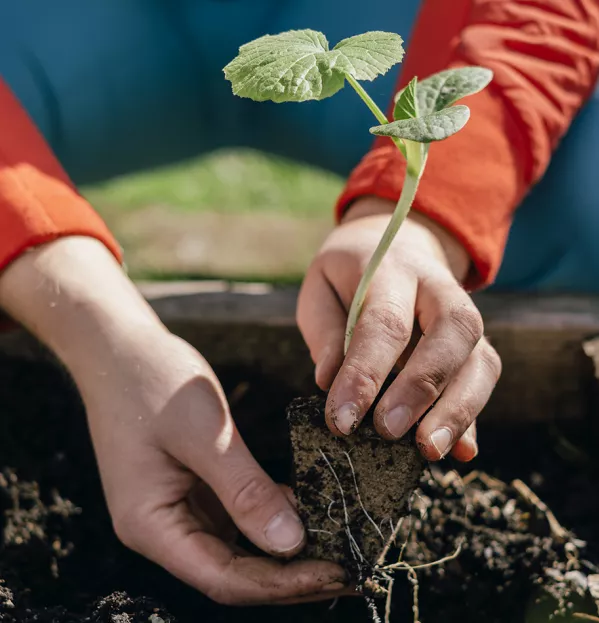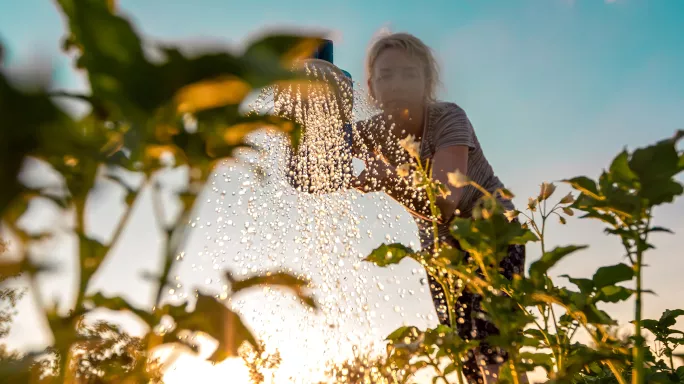- Home
- Analysis
- Specialist Sector
- Special schools do an ‘amazing job’, so what can we learn from them?
Special schools do an ‘amazing job’, so what can we learn from them?

Nikki Hepburn spent the early years of her teaching career in a school in Hackney, London. There were over 30 children in a class, many spoke English as a second language and many came from deprived backgrounds.
“How do you address the needs of those that need the most in that situation?” she asks.
She contrasts that with her one-on-one work now with Rebecca (not her real name) in a classroom called The Nest at Harmeny School, in the village of Balerno on the outskirts of Edinburgh.
Harmeny is a grant-aided special school that specialises in working with children who have complex social, emotional and behavioural needs; essentially, it is Scotland’s national school for pupils with such needs. Hepburn, who has worked there for almost 25 years, is the art and learning support teacher.
Children come to see her in The Nest if they need extra support or more time to adjust before joining their class full time. And beyond the classroom are 35 acres of grounds: woodland, an adventure playground, a pond, a burn (Scots for “stream”) and a community garden. Just up the road is the Pentland Hills Regional Park, an area of natural beauty.
Being surrounded by nature is therapeutic for the children who attend Harmeny, says Hepburn.
Pupils grieving myriad losses
“A lot of our children are bereft or are grieving for lost relationships or lost settings and places. The cycles of the natural world help them understand what’s happening. Everything changes, nothing is fixed forever,” she says.
“Playing outside in the sun or in the snow is good for the soul and health and wellbeing.”
The setting is indeed idyllic, but the circumstances leading up to children attending Harmeny tend to be jarringly traumatic by comparison.
These children are some of the most complex in Scotland in terms of their social and emotional needs, says Harmeny chief executive Neil Squires.
Most of the school’s 32 pupils - 25 are residential, seven are day pupils - stay here 52 weeks a year. Aged between 5 and 18 (although the youngest pupil currently is 7 and the eldest 15), they have no family to go home to, even at Christmas.
“Children who are placed here on a residential basis have all experienced early years trauma through abuse, neglect and significant family disruption,” he says.

Harmeny pupils will often have been in care since before starting school and by the time they arrive, he says, the local authority has usually exhausted all other options.
“We see children referred here who have had between 10 and 15 placement breakdowns,” he says.
Squires, who started his career as a social worker, stresses that the children at Harmeny are “remarkable survivors” but they have “been through a lot”, and present with “huge levels of anxiety and significant attachment disorders”.
He adds: “So this manifests itself in very distressed behaviours.”
The upshot for staff is that children lashing out is a daily occurrence - hitting, kicking, punching, spitting - and they often find themselves on the receiving end. But because they know the backgrounds of the children and where the behaviour is coming from, deputy head of education Karen Eastwood says that makes it easier to process - and not to take personally.
‘Hanging in’ after violent episodes
Eastwood talks about “love bombing” the children here and “hanging in and hanging out” - so even after a violent episode, for example, staff will “hang in”. Hanging out is just about being present - “not doing things to them but doing things with them”, she explains.
Scottish teachers in mainstream classrooms are frequently encouraged now to “get curious” about what lies behind pupils’ disruptive behaviour. This is the mantra of Dr Suzanne Zeedyk, a prominent campaigner on increasing understanding of “adverse childhood experiences”, or ACEs.
But, while class sizes at Harmeny never exceed six children, in mainstream Scottish schools there can be up to 33 children in a class.
At Harmeny - established by Save the Children in 1958 and run by the Harmeny Education Trust since 1995 - teachers are also well supported by other professionals. Every class has a teacher, an education support worker and a “social educator”, the last of which works in the cottages where the children live, as well as being a presence in the classroom.
The high numbers of staff combined with the extensive grounds make it possible “to be creative” and “think outside the box”, says Eastwood, who has been at Harmeny for a decade and used to be a PE teacher in a Birmingham secondary.
This, she says, is Harmeny’s unique selling point and staff are brilliant at “education by stealth”.
“You don’t have to be sitting to learn, it’s about understanding there are so many different ways to learn,” she explains.
‘Back to basics’
Many Harmeny pupils have missed out on a basic early years experience and some have also been out of school for years, so there is a focus on creative play and learning how to play cooperatively.
The school “goes back to basics”, says Squires, and focuses on literacy and numeracy.
It is, he says, a matter of finding the right “hook”. He describes the Harmeny approach as “a strength-based, trauma-informed model”. Staff home in on any talent, skills or interests the child has and are then “building, building, building on that in a positive way”.
But they also use therapeutic interventions, “looking at that difficult stuff - the pain, the rage, the emotional fallout that comes from abuse and neglect”.
There is considerable emphasis on outdoor education, which, Squires says, is “a fabulous way of helping children raise their self-esteem”.
Outdoor education takes place at least one afternoon a week. The pupils go kayaking, walking, mountain biking, build dens and go “burn stomping”.
Reconfiguring the school day
The school also tries to time lessons to give teachers the best chance of success. Maths scheduled for last period on a Friday is not countenanced here; instead, literacy and numeracy lessons take place in the morning, when the pupils are best able to focus.
They have also recently extended morning break and lunchtime after finding that when these periods of downtime were longer during the pandemic both staff and pupils did better.
Now, the morning break is 30 minutes, not 20, and lunch spans an hour, as opposed to 45 minutes.
There is, it feels, much that mainstream schools could learn from the Harmeny approach.
Harmeny’s area of expertise is the most common additional support need (ASN) among Scottish pupils. The latest national figures, published this month, confirm that 37 per cent of Scottish pupils have an ASN and almost a quarter of those have social, emotional and behavioural difficulties.
Replicating the approach in mainstream schools
Some of what Harmeny does would be tough to replicate because it depends on high levels of staffing and small class sizes.
Staff also stress that they - unlike colleagues in mainstream schools - are under no pressure to drive up results, although they wish the impact they have on Harmeny’s pupils in other ways was better recognised. There is no real appreciation of the distance a child has travelled, they say.

So, what could be learned and applied in other schools? Being smart about timetabling English and maths could be a small tweak that makes a big difference. And, while Harmeny is making breaks longer, they are in some cases being shortened in mainstream schools.
Even the way Harmeny is designed in a physical sense could have important lessons for mainstream schools. The additional support for learning (ASL) inquiry being conducted by the Scottish Parliament’s Education, Children and Young People Committee has heard criticism of the trend for open-plan “super schools”.
Education secretary Jenny Gilruth admitted last week that many Scottish secondaries are simply “too big” and children get “lost”.
At Harmeny, a new block designed by architects Loader Monteith and Studio SJM opened in October so that pupils can now stay on at the school beyond the age of 14.
The new buildings house an art room, a woodwork room, a bike maintenance workshop and changing facilities to get cleaned up in after trips exploring the wilds of Scotland.
There are also several new classrooms. Between each is a small room called “Our Space”, furnished with a sofa or a couple of comfortable chairs. In the primary block the design is similar, with each classroom space interspersed with a small room pupils can retreat to if they become overwhelmed, called “pods”.
Space to scream, shout and sleep
In these small spaces pupils can scream and shout and throw things without hurting anybody else, says Eastwood - or, as one girl did recently, just curl up and fall asleep.
Such spaces exist in mainstream schools, too - “nurture rooms” or “quiet rooms” - but it has been suggested there are not enough of them.
A parent of a 13-year-old at Harmeny remembers when her autistic son was attending his mainstream primary. He was eventually removed from class permanently and educated in a meeting room. He also had to spend his breaktimes there.
It was, she says, “like caging an animal” - “he was going to fight back eventually”.
Ultimately, he was expelled and, after five months out of education completely, came to Harmeny in October 2019 at the age of nine.
His mum says the placement changed his life - and hers.
Staff with ‘the biggest hearts’
“It’s having the right sort of people for these kids - the staff at Harmeny are genuinely amazing. They have got the biggest hearts,” she said.
After attending as a residential pupil, her son is now a day pupil, having acquired the tools to “self-soothe” and live in the family home. Previously, the family was “walking on eggshells”, says his mum.
Schools need more staff to support children with complex needs and their families, she says. Teachers also need more training in ASN and the “horrific” waiting lists for child and adolescent mental health services need to be addressed, she adds.
But she is aware of some mainstream schools getting it right - others now need to “follow suit”.
‘These children deserve the very best’
Witnesses to the ASL inquiry have, similarly, said that how schools are run can determine whether children with ASN thrive or flounder. Angela Morgan, in her landmark 2020 review of ASL, also said that school culture had a big role to play in successful inclusion.
Squires would not share the exact cost of a placement at Harmeny, which he says is commercially sensitive information. Suffice to say, to send a child here is extremely expensive, particularly at a time when council budgets are under huge strain.
Squires sympathises with the predicament councils find themselves in, but stresses that “these children deserve the very, very best”.
Squires, who has been at the school for 14 years, says children are being referred younger now. He blames the Covid-19 pandemic and the impact it had on mental health, combined with cost-of-living and social housing crises, as well as Scotland’s drug problem.
“Families already living on the margins are struggling,” he says.
Positive relationships are key
Of course, all these pressures are also being felt by many families of children in mainstream schools.
There, the key to supporting children will be the same as at Harmeny, where what really matters, Squires says, is the “positive supportive relationships” children have with staff.
A key question is, with pastoral staff caseloads in secondary often tipping 200 pupils - and much larger classes - is there the capacity to build those relationships in mainstream schools?
The logistics are certainly daunting. Regardless, however, if schools such as Harmeny are in many ways doing an exemplary job, there is a duty for the education system more generally to learn from that and - where possible - apply similar principles and approaches.
Emma Seith is a senior reporter at Tes Scotland. She tweets @Emma_Seith
For the latest Scottish education news, analysis and features delivered directly to your inbox, sign up to Tes magazine’s The Week in Scotland newsletter
Keep reading for just £1 per month
You've reached your limit of free articles this month. Subscribe for £1 per month for three months and get:
- Unlimited access to all Tes magazine content
- Exclusive subscriber-only stories
- Award-winning email newsletters
topics in this article



